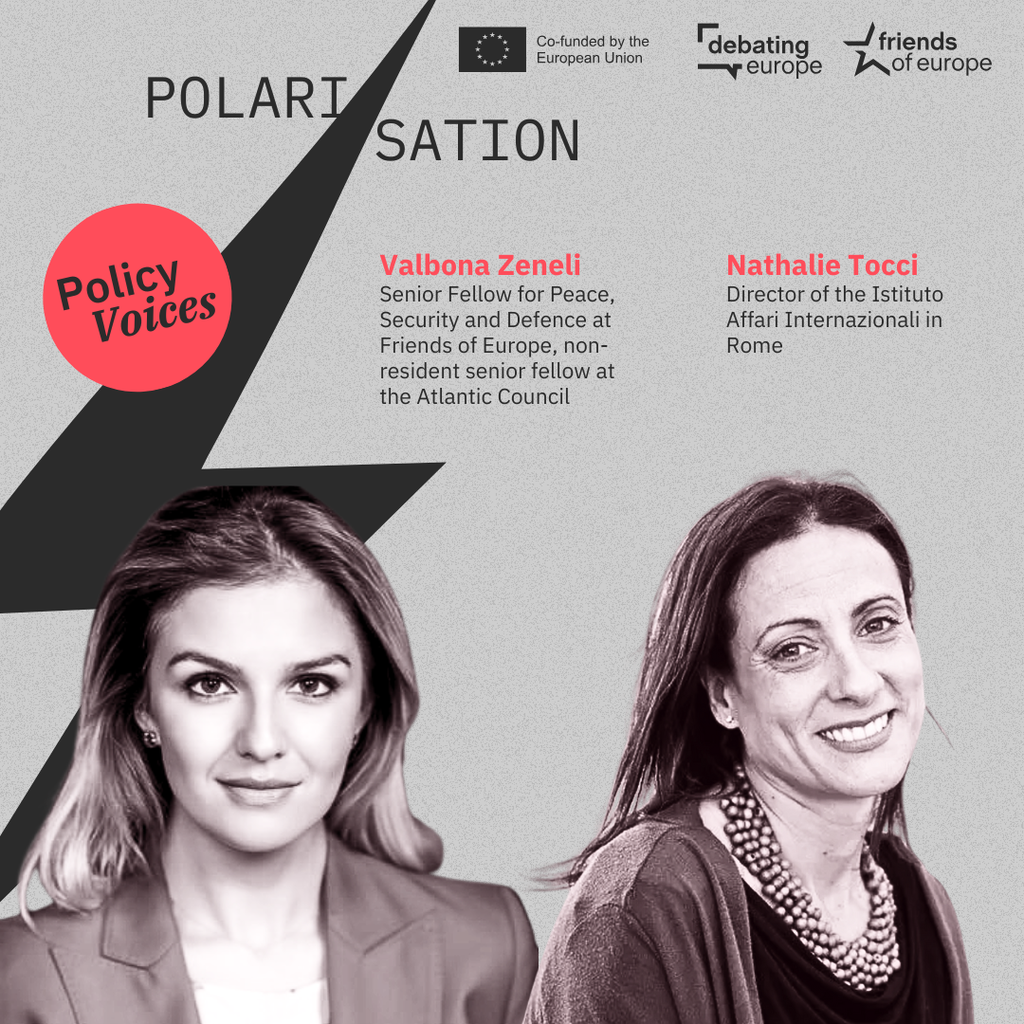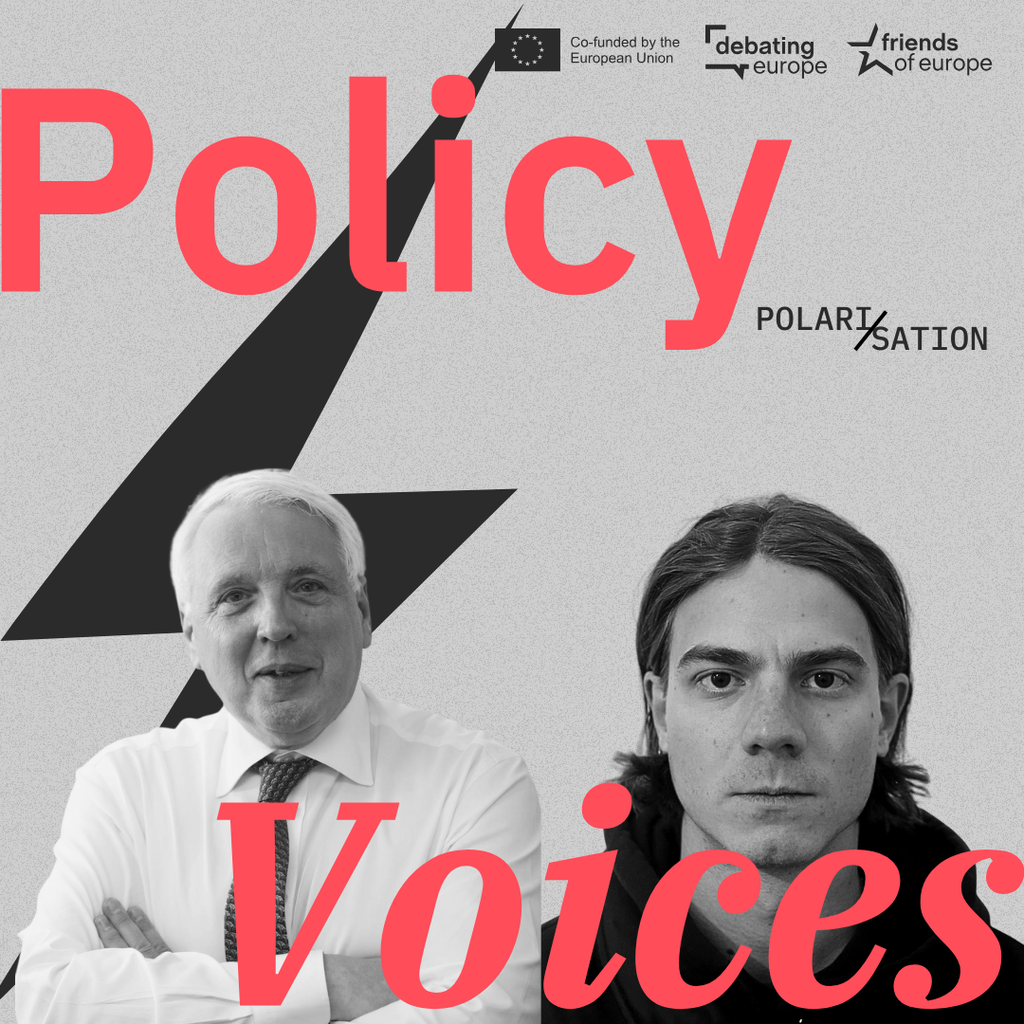From ambition to action: building Europe’s Defence Union
Past event In person

- Area of Expertise
- Peace, Security & Defence
Peace, Security & Defence

Senior Fellow for Peace, Security and Defence at Friends of Europe, and former Deputy Assistant Secretary General for Emerging Security Challenges at the North Atlantic Treaty Organization (NATO)
A few weeks ago, the Stockholm International Peace Research Institute (SIPRI) published its annual report on global military spending. The figure at just under $1.7tn was the highest ever, and showed that military budgets have returned to levels last experienced before the 2008 financial crisis. Given the growing geo-political rivalry between the United States and China it was not surprising to learn that both these powers had increased their military spending by over 5%. Yet what was less expected was to see that Europe had increased its military budgets just as much – by 5.5% on average. For many years now we have been accustomed to a narrative of Europe as a continent in military decline, and to harangues from President Trump that too few of the NATO allies were meeting their commitment to spend at least 2% of their GDPs on defence. The annual SIPRI reports had also shown Europe’s top military spenders, France, Germany and the United Kingdom, progressively slide down the league table in favour of rising regional powers such as India and Saudi Arabia. The image of a Europe too weak militarily to fulfil its global ambitions has long been a stereotype of transatlantic security conferences.
The COVID-19 crisis has hit Europe at the very moment when it was turning the corner on military spending and rebuilding the capabilities that it lost following the end of the Cold War. Since 2016 the number of NATO allies reaching the 2% target has moved from three to nine. €130bn above the 2016 baseline have been added to NATO’s spending total, not counting the United States. Germany, much criticised by Trump for not being able (or willing) to go beyond 1.5% of GDP by the 2024 deadline, showed the largest increase at 15%.
Yet spending more achieves little in itself if the money is not invested wisely. Here too the Europeans were turning the corner. For the first time in many years European governments launched new equipment programmes. Germany decided to modernise the Luftwaffe with US F 18s and European Typhoon fighter jets. Poland is investing in Patriot air defence systems, France and Belgium in new armoured personnel vehicles and France has increased its space budget by €3.5bn to acquire a new generation of satellites. Moreover, the highly fragmented European defence industry was showing some welcome signs of opening up to more intra-European competition and collaboration. Germany awarded the contract for its new frigate to Dutch naval constructor, Damen, and the French shipyard, Naval Group, agreed to a partnership with its Italian counterpart, Fincantieri.
In recent times, Europe has not been known for launching long term, future-oriented defence programmes. It has preferred to buy existing off the shelf equipment, often from the US. Yet here too the last few years have seen a welcome turnaround with France and Germany embarking on the design of a sixth-generation fighter aircraft and associated avionics and defence systems (such as drones) and also on a future tank. The European Union in the meantime has launched a European Defence Fund with the target of €13bn in the next EU Financial Framework to stimulate multinational projects with a view to generating more defence bang for the Euro from the EU’s already considerable R&D capacities. As NATO has organised a regular series of combined arms exercises to restore collective defence in Central and Eastern Europe, Europe’s armed forces have begun to re-acquire some of the high-end combat skills that declined after the Cold War when military establishments became more focused on peacekeeping and stabilisation operations. Together all these improvements raised hopes that Europe within a few years would have the budgets and the modernised armed forces to take on more responsibility in NATO while also defending its interests in its neighbourhood as part of the EU’s Common Security and Defence Policy (CSDP).
Less than a fifth of the equipment in Europe’s armed forces today is the result of European industrial collaborations
The enormous economic impact of the COVID-19 crisis, with EU governments looking at ballooning deficits and sharply declining tax revenues as they take drastic steps to cope with the crisis, will clearly place a large question mark over the future of this European defence effort. NATO has suspended or curtailed some of its readiness training exercises but so far no specific reductions in defence expenditure have been announced nor equipment programmes cancelled. These will probably come in the autumn when the virus has subsided and the full impact of the economic damage becomes clearer. At the same time the armed forces have had a good crisis thus far by demonstrating their value as a support to civilian authorities in building temporary hospitals, airlifting medical supplies from one ally to another and transporting both patients and the deceased from one location to another. The professionalism and organisation of the armed forces as an element of rapid crisis response and resilience have received widespread public recognition, but whether this will translate into political support to uphold defence budgets in the face of demands for more investment in hospitals, schools and unemployment benefits remains to be seen. At the very least we can expect the old tactics of salami slicing, slowing down procurement, freezing new recruitment and avoiding fresh deployments abroad.
When Europe last scaled down its armed forces, the context was the end of the Cold War. It was the “end of history” and of major adversaries and time to reap the “peace dividend”. So it did not matter too much that NATO and EU countries slashed their spending and mothballed their equipment in a haphazard and uncoordinated way. Germany reduced its tank fleet from 2,250 to just 10% of that number and the Netherlands sold off all its 700 tanks. Air wings were cut and land divisions were turned into brigades and then battalions, sustained in operations in Iraq, Afghanistan and the Balkans by cannibalising the stocks of reserve forces back home. Yet today the geopolitical environment is more nationalist and confrontational. While Europe has been in strategic lockdown due to the virus, fighting in Afghanistan, Libya, Yemen, Syria. northern Iraq, the Sahel and even closer to home the Donbas has intensified. Soon Europe will have to turn its attention once more to how to pacify and resolve these conflicts. So it will be crucial that Europe manages its defence budget build down this time in a coordinated and coherent way to preserve its defence industrial base and as much military capacity as possible. Indeed a budgetary crunch can be an opportunity to make some useful reforms that will make EU defence more effective. Here are five ideas worth considering as starters
One. Use the newly established Coordinated Annual Review of Defence (CARD) to hold consultations with EU member states before they announce cuts to budgets and programmes. The EU High Representative, the Military Planning Staff and the Commission should perform a joint impact assessment of the cuts on the overall EU force and readiness posture. They should make proposals to the member states on how to minimise this impact and on how vital military requirements can be sourced elsewhere, for instance through bilateral arrangements or multilateral capability packages. Close coordination with the NATO Defence Planning Process and its annual Capability Review will help to ensure that both the EU and NATO have a common set of priorities. Together they must set force goals that serve the needs both of CSDP missions and illustrative planning scenarios and the Alliance’s collective defence.
Two. We have been talking about smart defence and more multilateral pooling and sharing of resources in Europe for years. Yet less than a fifth of the equipment in Europe’s armed forces today is the result of European industrial collaborations. The EU’s Permanent Structured Cooperation (PESCO) is designed to promote more cooperation and nearly 80 projects involving at least two EU member states have been announced. Yet many of these are about joining up processes (such as training courses or exercise planning) rather than producing new equipment. So PESCO needs to be more ambitious. Europe’s defence industries need to form closer partnerships and create more opportunity to compete in each other’s markets. Modern business management methods need to be introduced into ministries of defence to control escalating procurement costs. Yet above all Europe needs more groups of member states coming together under framework nations to procure and operate military enablers, those high-end capabilities that member states find it hard to afford individually. A good recent example is the acquisition by 6 European countries of eight Airbus A330 multi-role tanker aircraft which can also be used to airlift troops and supplies (for instance medical evacuations). The aircraft will be based at Eindhoven and managed in terms of maintenance and life cycle costs by the NATO Supply and Procurement Agency. These leasing and joint participation schemes can give EU countries assured access to important capabilities even with squeezed budgets.
The post COVID-19 world with an economically weaker EU in a more carnivorous world will need a sharper focus for the CSDP
Three. When budgets are tight, R&D and innovation are usually the first things to be sacrificed as priority is given to current operations. Indeed discussions on the EU’s next financial framework indicate that funding for the EU Defence Fund has plummeted to between €7 and 8bn and funding for military mobility (essential to get forces to the action quickly enough to be useful) cut from €6.5bn to zero. We have to hope that some of the projected funding is restored as technology is changing the nature of conflict quickly. Russia and China are leading the way in offensive cyber, data management fuelled by AI and 5G connectivity, the military use of space, hypersonic missiles and electronic warfare. Europe has to stay in the game and therefore the new DG in the Commission, led by Thierry Breton, has a crucial role to play in identifying the EU’s strengths and weaknesses in the technology area and in shaping a future European defence industrial base that will help Europe to catch up where it has to. A defence technology strategy can help member states to ring fence investments in the game changer technologies with military applications.
Four. Different EU member states have been out and about on different military operations over the past three decades. Some have prioritised Afghanistan, others Iraq or the Balkans or the Sahel, still others UN peacekeeping or collective defence in central and Eastern Europe. The nearly 30 CSDP missions to date and all over the world have not revealed a common EU centre of gravity or clear security strategy. Often they have appeared ad hoc and driven by opportunity rather than necessity. Yet the post COVID-19 world with an economically weaker EU in a more carnivorous world will need a sharper focus for the CSDP. Fewer missions but more linked to the EU’s threat landscape and security interests and with much greater participation by EU member states to share the burden. This is in marked contrast to the handful of EU countries that have sent forces to support France in its counter-terrorism and capacity building operations in Mali and the wider Sahel region, or the only seven EU countries that joined NATO’s UN-endorsed air campaign in Libya in 2011. The EU needs to devise a stabilisation strategy for its periphery and a set of military engagements precisely tailored to its core objectives.
Five. As one’s own capabilities decline, finding willing and able partners to help you out and supply extra resources becomes ever more useful. The EU has benefited via NATO from the defence contribution to its security from some long-standing partners, notably the US, the UK, Canada, Norway and Turkey. Three of these allies have become difficult partners for the EU as they have moved away from its economic model and its integrationist values. Disagreements in these areas can also tug at the security relationship as evidenced in the UK’s post-Brexit rejection of a structured involvement in the CSDP and EU defence programmes. The US has recently announced the pull out of its special forces and drones from the Sahel putting France in a difficult position. Turkey meanwhile has clashed with France over its presence in Syria and its assertive maritime deployments off the coast of Cyprus. So this is not an optimal time for the EU to build effective defence partnerships in support of CSDP priorities with these three prickly nationalist-minded countries. And yet the diplomatic clout, and modern military capabilities together with interventionist cultures of these countries simply make them too vital to give up on. Simply put, things will go better if they play along rather than stay on the sidelines or even undercut the EU’s purpose. This will be a key test of the diplomatic skills of High Representative Borrell and of the major EU leaders such as Emmanuel Macron and Angela Merkel.
In military culture the most difficult manoeuvre is an organised retreat which extracts the force intact from a tricky situation; and allows it to bounce back for victory later on. An organised retreat requires skill and a clear set of priorities and impeccable discipline by everyone involved. This is now the challenge of declining defence spending so that the health crisis does not turn into a security crisis for the EU.
Past event In person

Next event In person & Livestreamed

Past event Online

Past event Online





Stay informed
We use cookies and similar technologies to adjust your preferences, analyze traffic and measure the effectiveness of our campaigns. Learn more about our privacy policy.